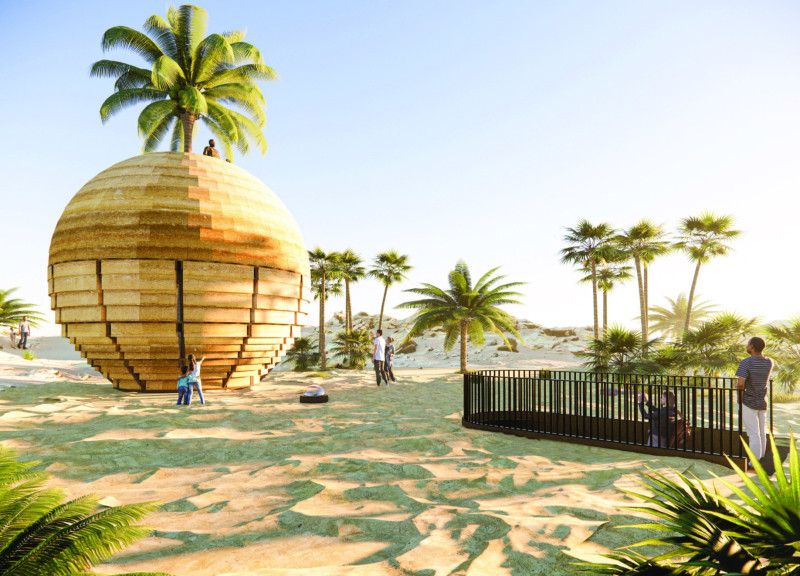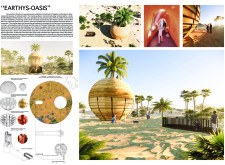5 key facts about this project
Earthys-Oasis is a new permanent exhibition located in the Desert of Agafay, Marrakech. It focuses on the qualities of rammed earth, a building material that connects closely with the local environment. The design features a circular form, symbolizing unity and continuity, inspired by the natural cycles of the sun and moon. By engaging with the landscape, the structure creates a space for visitors to appreciate both nature and traditional building techniques.
Design Concept
The concept revolves around achieving harmony with the environment. The circular shape of the pavilion reflects natural forms and emphasizes a connection to the desert landscape. Instead of standing out, the structure is integrated into its surroundings, echoing the patterns of nature. Visitors are invited to experience a flow of space that feels connected to the world outside.
Materiality
Rammed earth is the primary material used in the building. This method, which is plentiful in the region, suits the local climate well. It provides thermal and acoustic benefits, ensuring a comfortable environment for visitors. The walls help to keep the space cool during the heat of the day and warm at night, which contributes to energy efficiency.
Visitor Experience
The layout encourages an engaging journey for guests. A descending staircase leads them into a gallery where they can touch and feel the textured surfaces created by the rammed earth construction. This tactile interaction fosters a deeper understanding of the material. Once they ascend the helical staircase, visitors are rewarded with a terrace that presents expansive views of the desert, enhancing their connection to the surrounding landscape.
Lighting and Ventilation
Natural light and ventilation play key roles in the design. An open wooden structure enhances airflow and allows daylight to fill the space. This design choice minimizes reliance on artificial lighting and promotes energy savings. Throughout the pavilion, the play between light and shadow creates varied visual experiences, encouraging visitors to explore both the architecture and the landscape.
The pavilion's rammed earth walls display unique textures that engage the senses. This not only highlights the building's relationship with the environment but also invites reflection on sustainability and the value of traditional construction methods.



















































